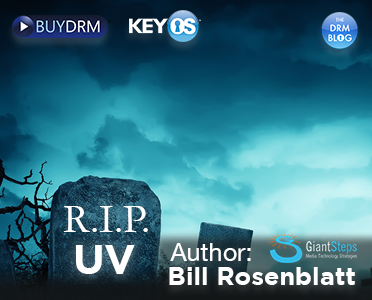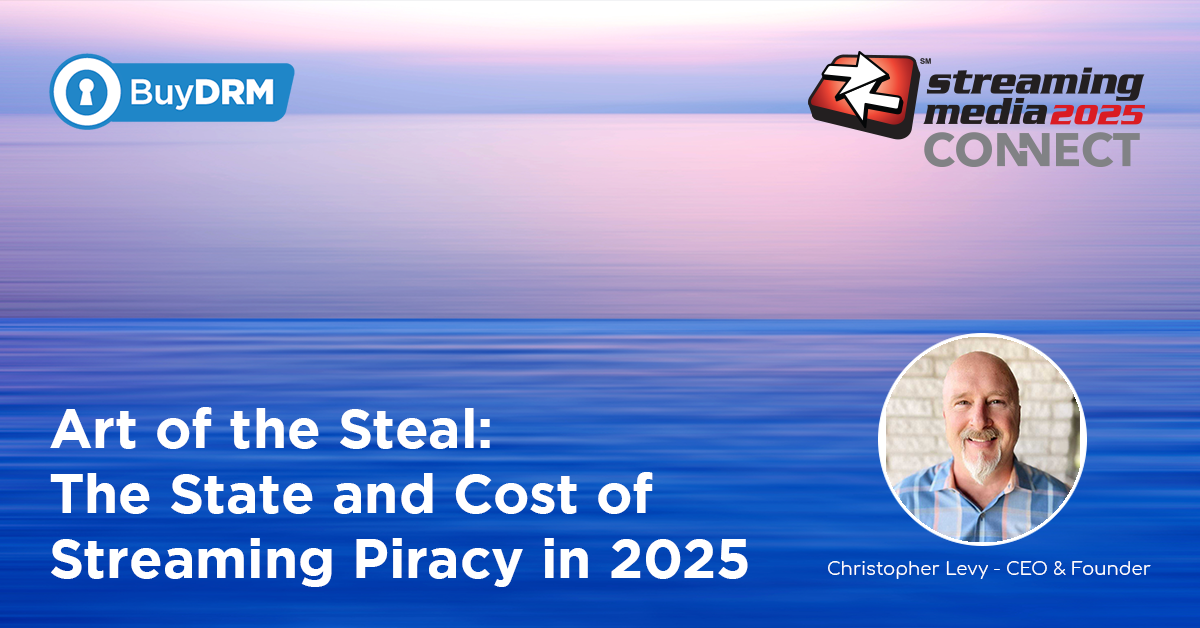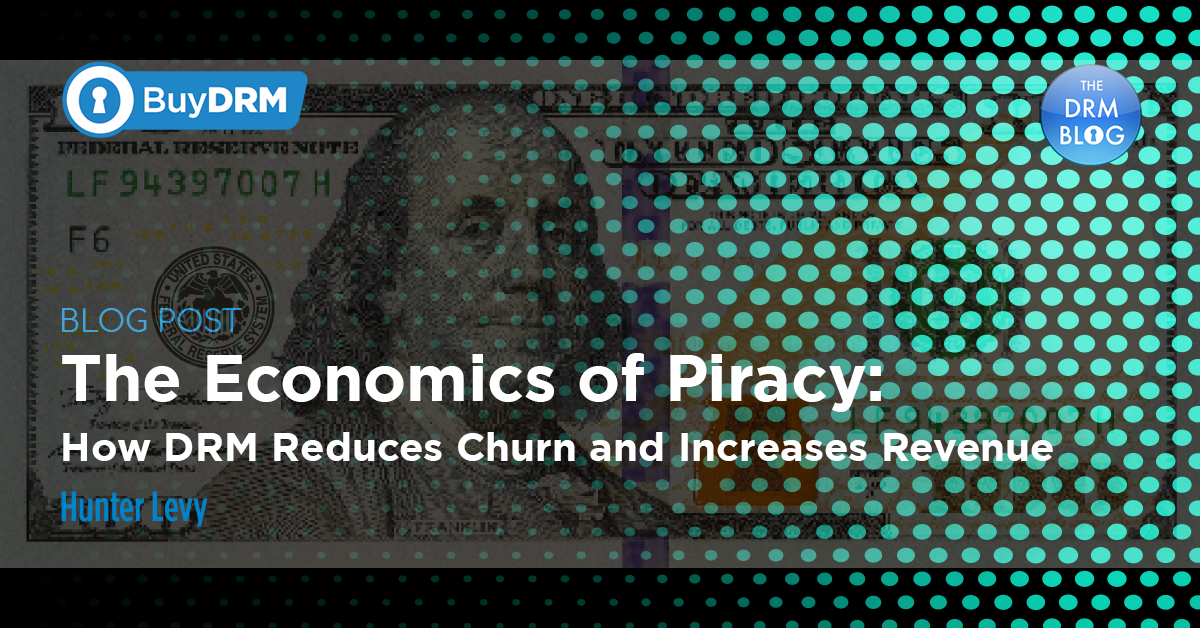Last week the Digital Entertainment Content Ecosystem (DECE) announced that it is winding down the UltraViolet system for interoperability of digital video. The service will shut down at the end of July. This step – widely seen as inevitable for the last couple of years – is a milestone in the gradual demise of consumer ownership models for digital content. UltraViolet was sophisticated and clever technology, but it was ultimately doomed by a combination of the scheme’s complexity and market dynamics.The DECE was first conceived in 2006 by a group led by Mitch Singer of Sony Pictures, under the name Open Market. At that time, the music industry was reeling from a combination of unauthorized MP3 file-sharing and a series of licensing decisions that resulted in Apple having a near-monopoly on legal digital music downloads with its iTunes ecosystem. Hollywood wanted to avoid the same fate as record labels as it built out the market for digital video.
Avoiding the music industry’s fate meant achieving two goals that — at least in hindsight — seemed incompatible: preventing a single retailer from dominating the market and requiring strong DRM to protect content from unauthorized copying.
2006 was also a time when streaming video was seen as coming around the corner. Hollywood feared streaming; studios were concerned that they would lose lots of revenue if consumers stopped buying DVDs and Blu-rays. Various digital video download services were available at that time, but they weren’t very popular: files (roughly a gigabyte per hour of standard-definition video) took forever to download, people didn’t want to watch movies on their PCs, and other devices capable of playing digital video with decent quality, such as digital set-top boxes (e.g. Roku and Apple TV), had yet to hit the market.
The system that DECE designed, and branded in 2010 as UltraViolet, was a highly ambitious attempt to achieve all of those mid-to-late-2000s goals at once. Hollywood wanted DRM that was not only impervious to hacks (unlike the weak DVD encryption) but would also interoperate across retailers in order to eliminate walled gardens and force competition. And it wanted to make downloads attractive to consumers so that they would still buy movies and TV shows instead of streaming them.
The idea of UltraViolet was to create a central “rights locker” that would store information about users’ purchases of movies and TV shows at multiple retailers. The rights locker would also store DRM encryption keys that could be used with a variety of different DRMs in order to work with different types of devices and distribution schemes. Users would set up free accounts with the rights locker and use those accounts in connection with purchases at participating retailers.
The key technical insight was that most Hollywood-approved DRMs of that time used the same core AES encryption algorithm, so it was possible to use a single key for a given item of content across multiple DRMs. DECE ultimately approved six DRM schemes for UltraViolet: PlayReady (Microsoft), Widevine (Google), Marlin (Intertrust), Primetime (Adobe), the CMLA-OMA DRM standard for mobile devices, and DivX DRM. Notably absent from this list was Apple’s FairPlay. When consumers bought videos from participating retailers, they could get additional copies for different devices that used different DRMs. UltraViolet also implemented a family plan that enabled up to five people to share purchased content – a first at the time.
DECE set out to attract retailers to participate in the scheme, but it didn’t offer them much in the way of incentives. The scheme prevented retailers from building walled gardens a la iTunes. And retailers couldn’t compete on price, since a user could simply go to the retailer with the lowest price and get the same offering as other retailers. DECE hoped that UltraViolet would eventually become the dominant way to get licensed digital video and therefore that retailers would need to participate in order to offer premium Hollywood content. In other words, DECE had to walk a tightrope of convincing each retailer to go along because all the other retailers were going to.
UltraViolet’s success was also predicated on the assumption that all of the major Hollywood studios and TV networks would license their content for UltraViolet distribution.
UltraViolet did modestly well for a few years. Its primary success was with a feature called Disc to Digital, in which users could buy DVDs or Blu-ray discs that came with barcodes that (for a small extra charge) enabled them to get digital copies of the same content through UltraViolet accounts.
But ultimately none of the factors that were required for UltraViolet to become the dominant digital video scheme fell into place. First, almost none of the important retailers – i.e., Apple, Amazon, and Google – agreed to participate. (Target launched a participating service called Target Ticket but shut it down after less than two years; Amazon dabbled with UltraViolet briefly but didn’t continue.) The only major retailer that did participate was WalMart, via its VUDU service. Major retailers had their massive customer bases and weren’t interested in allowing those customers to interoperate with competitors’ systems; another disincentive was UltraViolet’s high cost of adoption and operation. The number of participating retailers dwindled over time.
Second, not even all of the major Hollywood studios participated. Some only licensed limited catalogs of movies. The biggest absence was that of Disney. Disney even created its own competing system called KeyChest (now Movies Everywhere), which focused more on streaming than on downloads. (UltraViolet did eventually support streaming as well as downloads.) Presumably the major reason for Disney’s lack of participation was its strong ties to Apple: Steve Jobs was Apple’s largest individual shareholder and sat on Disney’s board. Apple did not want a media ecosystem to succeed in which retailers and technology vendors weren’t in control.
Yet even if all of the retailers and studios participated, the DECE member studios’ insistence on preserving the download market would have led to UltraViolet’s downfall anyway. And ironically enough, it was the music industry that cause this shift in the market. By the mid-2010s, services like Spotify and YouTube had made streaming music very popular, and users became comfortable with the idea of accessing massive catalogs of music by subscription rather than purchasing individual files. As music streaming became huge, paid downloads began to plummet. This led to the same phenomenon in video: services such as Netflix and Hulu became huge while sales of downloads (and DVDs and Blu-rays) fell flat. Just as ironically, subscription streaming services are all walled gardens, but few people complain about that anymore.
In other words, the 2006-2007 market dynamics that motivated Mitch Singer and his crew to create DECE and develop the UltraViolet system are no longer relevant today. Instead, streaming services have introduced new types of competition among distributors that Hollywood didn’t anticipate a decade ago; and the tug-of-war among participants in the digital supply chain continues.
This post is courtesy of The Copyright and Technology Blog. The original post can be found here: https://copyrightandtechnology.com/2019/02/03/r-i-p-uv/












